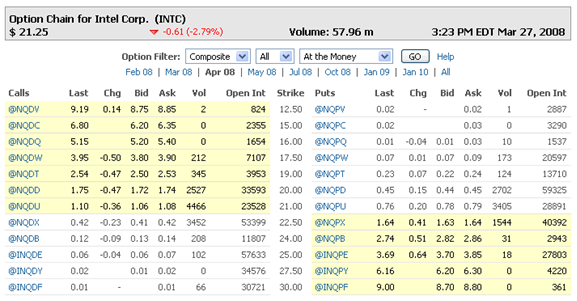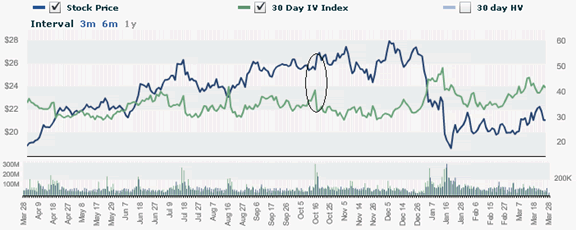Covered Calls Definition � Options Explained � optionMONSTER
Post on: 23 Апрель, 2015 No Comment

The covered call strategy involves owning or buying stock and selling an appropriate number of calls against it.
It is a slightly bullish to neutral strategy.
It can generate extra income in your account and potentially reduce volatility.
It is equivalent to a short put.
The maximum gain is limited; the risk is the same as owning the stock (minus the credit for selling the calls).
Would you like to.
- Generate income in neutral or rising markets?
- Get paid to sell your long stock position?

You own a stock that is part of your long-term investment portfolio. You like it long term, but don’t see it going anywhere over the short term and would consider selling it, given the right terms. You would also like to generate some income, but you aren’t interested in selling your stock only to buy a CD with a next-to-nothing return.
Given these conditions, many self-directed (or retail) traders use covered calls to generate income in their accounts. It is highly conservative and therefore widely popular. In fact, many stock traders begin trading options this way. The strategy can also be used to finance purchasing long stock positions: if used in conjunction, it is known as a buy-write, when the investor buys the stock and writes (or sells) the call. A covered call is equivalent to a cash-secured put.
What is a Covered Call?
Implementing the covered call strategy involves buying (or owning) 100 shares of a stock and then selling a call that is covered by the stock (since 1 options contract usually controls 100 shares of stock). The sale is a credit and adds cash to your account. But while selling the call brings income to the account, it creates the obligation to sell the stock if the call is assigned. Note that this his can create tax issues for stock with a low cost basis.
Covered calls are profitable within a defined range. They profit if the stock price drops by less than the amount of the sold call, and remain profitable if the stock moves up to or beyond the strike price of the call sold. The maximum gain is realized if the stock price is at the strike price. At that point, the full value of the sold call is retained while the stock has achieved its maximum without assignment.
Example: With the stock at 48, you sell a 50 call for $1. If the stock goes to $49.50, you gain $1.50 per share and keep the $1 of premium.
If the stock goes to 47.20, there is .20 of profit. Your stock would have lost $.80, but you gained $1 from selling the call option. Meanwhile, if the stock goes to 50.30 at expiration, the call will be assigned and the stock sold. You will recognize a $2.00 gain in the stock price and $1 profit from the option premium which you received; but of course you will have sold your stock.
If the sold call can be bought back for a small amount before expiration, it is usually best to do so, in order to lock in your profit and eliminate exposure to risk.














